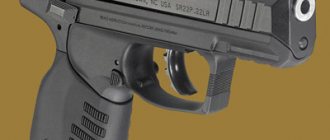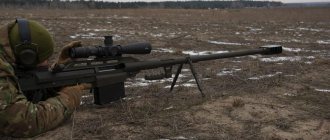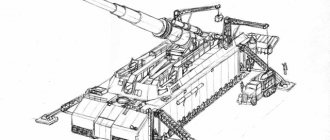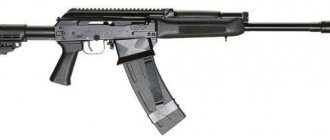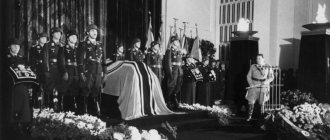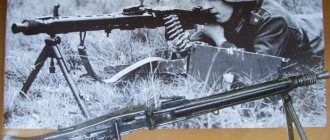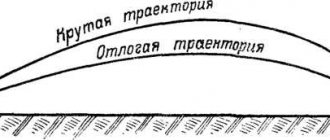The rank system in the US Army is somewhat different from the Russian one. And if officer ranks are similar to those accepted in the armed forces of the Russian Federation or China, then with sergeants the situation is much more complicated. It is to them that the closest attention is focused on the part of the command staff, since many future officers will emerge from their number.
The essence of the US Army
The first thing to note is that the US Army refers primarily to ground forces. Thus, the Coast Guard, Military Police, Marines and Air Force are separate branches of the US armed forces. Thus, the insignia of all officers and sergeants is different.
The US Army has two main elements - active and reserve troops, in addition to them, the ground forces also include the National Guard and the Army Reserve. They do not depend on each other in any way, but fulfill one common mission - to protect their territory in all possible ways.
Why do I need to know this?
Many will be interested to know that the generally accepted American divisions into ranks by military rank are used not only in military affairs. For example, in the popular military-tactical game airsoft , some teams actively use ranks adopted in the US . Therefore, those who are interested in this game will find this information useful, which will help quickly destroy the command.
US Army military ranks :
- When you meet a team in airsoft that follows the established NATO ranks, you will know who to eliminate first.
- By addressing a soldier of these troops correctly by rank, you will amaze him with your broad outlook and high intellectual abilities.
- When reading literature, historical or fiction, you will clearly know what place the character occupies in the military hierarchy.
US Army ranks
The first composition of the military ranks of the US Army is ordinary soldiers and sergeants. They are the backbone of the Army because they have specialized knowledge and perform specific functions that ensure the success of the ongoing mission of other branches of the Army. Hierarchically, the ranks of ordinary soldiers follow in this order:
- recruit (has no insignia);
- private;
- Private Soldier First Class;
- specialist;
- Cpl.
Sergeants by rank are divided into:
- sergeant;
- staff sergeant;
- Sergeant First Class;
- master;
- first sergeant;
- major;
- command major;
- US Army Sgt.
There are two types of officers in the Army: Warrant Officers and Commissioned Officers. The latter are essentially managers of the US Army, key figures and professional strategists. They are the ones who solve problems that arise, plan missions, give orders, lead the ground forces and may have the following ranks:
- second lieutenant;
- first lieutenant;
- captain;
- major;
- lieutenant colonel;
- colonel;
- brigade general;
- Major General;
- Lieutenant General;
- general;
- US Army General.
Every person who devotes his life to defending the Motherland is an important figure for the army, regardless of rank.
Ranks in the US Army
Ranks in the American army can be divided in ascending order into several groups, where each has several positions. Of course, each subsequent assignment carries more powers, but each group designates a certain set of functions characteristic of the military personnel belonging to it. So, the list of groups looks like this:
- rank and file - the first rank (private-recruit) is assigned to “green” recruits who are commissioned for the first time. It has no insignia. Next comes the regular private and private 1st class. The highest in this group are considered to be corporal and specialist - more experienced comrades responsible for junior military personnel. Such soldiers are the main performers of duty, called upon only to carry out orders;
- sergeant corps - includes eight positions from a simple sergeant to an army sergeant major. The range of functions here is limited to the acceptance of delegated powers from junior officers when it is necessary to organize a certain work process. However, these are already experienced military men;
- warrant officers - comparable to domestic warrant officers, they are divided into 5 classes, each with their own insignia. They are not required to perform command functions, but to provide high-quality technical support for the service. Financial responsibility for providing for the army lies with them;
- officers - present here in ascending order: second and first lieutenants, captain, major, lieutenant colonel and colonel. These titles make it possible to apply for a serious position, with a large number of subordinates and broader command powers;
- The general staff are the leaders of the US Army who are in direct contact with the country's leadership and give the main orders. The highest rank - General of the Army (not to be confused with the previous General of the Army) is received by only a few; it is almost impossible for a foreigner to receive it.
Let us note that among the rank and file there is an interesting title – specialist. This is closer to sergeants, but in general such servicemen are not considered military in the standard sense - they receive their “title” after receiving a certain education and are responsible specifically for the narrow industry in which they understand.
Each class has its own requirements, and you can move to the next group only if they are fully met. Of course, not only the powers differ, but also pay and prospects, but for any military junior officer the state already creates fairly solid conditions - this significantly differs the North Atlantic approach from similar structures in other major armies.
Important! It is possible to obtain citizenship through military service, but the process has several difficulties. If there is another option, it is better to use it, otherwise, thoroughly study the terms of service and the deadline for obtaining a passport.
US Army Subcomplexes
The organizational structure of the ground forces is the driving force of the army, which makes it possible to unite soldiers and officers into a single whole. It consists of the following divisions:
- detachment (operating under the command of a sergeant);
- platoon (under the control of a lieutenant);
- company (the captain oversees this unit);
- battalion (commander is a lieutenant colonel);
- brigade (the colonel controls this structure);
- division (under the command of a major general);
- corps (managed by a lieutenant general);
- army (may also be commanded by a lieutenant general).
Leading a military subunit is a real honor for a soldier or officer.
American military uniform
Unlike the Russian army, where the uniform can be ceremonial, ceremonial-weekend, field, work and everyday, in the US army it is divided into three categories:
- Utilitarian military uniform, or as the Americans call it, combat uniform. This category consists of all kinds of special clothing for various applications. For example, sports uniforms, equipment for operating combat vehicles, clothes for the hospital, kitchens, and even special uniforms for pregnant women.
- Service uniform, which is intended for everyday wear.
- Uniform for social events or ceremonial weekend. Clothes in this category range from white summer uniforms to uniforms for receptions, dinners and other events.
It is worth noting that the US Army uniform is made to order and tries to use the best materials to make soldiers and officers comfortable and practical both in battle and in everyday life.
US Army military ranks
The leadership in the US Army is divided into certified (Commissioned Officers) and non-certified (Non-Commissioned Officers). Certified officers have three categories:
- General Officers - corresponds to the general ranks in the Russian Army.
- Field Grade Officers - a field category command corresponding to the senior officers of the RF Armed Forces.
- Сompany Grade Officers are company category commanders, corresponding to junior officers in the Russian army.
In the United States troops there are also Warrant Officers, which translates as “warrant officers.” Their rank corresponds to ensign. The US Air Force does not have this category at all. Uncertified officers are equivalent to sergeants and foremen of the Russian army.
Conscripts and soldiers in general constitute the Enlisted category, which corresponds to ordinary soldiers of the Russian Armed Forces. It also includes the rank of Corporal (junior sergeant). American conscripts undergoing the young fighter course are called recruits and do not have insignia.
The comparison presented in the table is purely conditional, since some ranks are simply not available in the Russian Armed Forces. So, we do not have the concept of a brigadier general. The commander of a brigade within a division is usually an officer with the rank of colonel, while a separate brigade is commanded by a major general.
Unlike the Russian army, where ranks and positions often overlap, in the United States there is a number of ranks that perform strictly defined functions and responsibilities. This is especially evident in the sergeant ranks. In addition to the 1st Sergeant, there are three more:
- Sergeant Major;
- Command Sergeant Major;
- Sergeant Major of the United States Army.
Sergeant Major is the commander of all non-commissioned officers of a single military unit, be it a battalion, regiment, brigade or division. Command Sergeant Major performs the same functions, but at the military district level. The rank of Sergeant Major of the United States Army is held by the only officer under whose command is the non-commissioned officer of all ground forces of the US Army.
Who are Warrant Officers?
According to the official US Army website, a non-commissioned officer is an adaptive technical expert, combat leader, trainer and advisor. Thanks to the advanced level of knowledge gained during training, this officer is able to manage, maintain and integrate systems and equipment across the entire spectrum of land operations. And to put it in simple words, a warrant officer is a warrant officer, that is, not yet an officer, but not an ordinary sergeant either.
Of course, depending on the rank, the responsibilities of “warrant officers” may differ. For example, the first class of warrant officers acts as secretaries to their senior colleagues. They help with paperwork and perform simple functions related to personnel management and technical support for the army. And the fifth class of chief warrant officers manages entire brigades, divisions and other classes of warrant officers, making final decisions and issuing orders.
The table contains military ranks in the US armed forces and their generally accepted translation into Russian.
| Fleet Admiral | — | ||
| General General | General General | Admiral admiral | General General |
| Lieutenant General | Lieutenant General | Vice Admiral | Lieutenant General |
| Major General | Major General | Rear Admiral | Major General |
| Brigadier General | Brigadier General | Commodore Commodore | Brigadier General |
| Colonel Colonel | Colonel Colonel | Captain captain | Colonel Colonel |
| Lieutenant Colonel Lieutenant Colonel | Lieutenant Colonel Lieutenant Colonel | Commander commander | Lieutenant Colonel Lieutenant Colonel |
| Major Major | Major Major | Lieutenant Commander | Major Major |
| Captain | Captain | Lieutenant Fleet Lieutenant | Captain |
| First Lieutenant | First Lieutenant | Lieutenant, Junior Grade junior lieutenant of the fleet | First Lieutenant |
| Second Lieutenant | Second Lieutenant | Ensign Ensign | Second Lieutenant |
| Chief Warrant Officer-4 | Chief Warrant Officer-4 senior warrant officer 4th class | Chief Warrant Officer-4 senior warrant officer 4th class | Chief Warrant Officer-4 senior warrant officer 4th class |
| Chief Warrant Officer-3 senior warrant officer 3rd class | Chief Warrant Officer-3 senior warrant officer 3rd class | Chief Warrant Officer-3 senior warrant officer 3rd class | Chief Warrant Officer-3 senior warrant officer 3rd class |
| Chief Warrant Officer-2 senior warrant officer 2nd class | Chief Warrant Officer-2 senior warrant officer 2nd class | Chief Warrant Officer-2 senior warrant officer 2nd class | Chief Warrant Officer-2 senior warrant officer 2nd class |
| Warrant Officer-1 Warrant Officer 1st Class | Warrant Officer-1 Warrant Officer 1st Class | Warrant Officer-1 Warrant Officer 1st Class | Warrant Officer-1 Warrant Officer 1st Class |
| Sergeant Major of the Army | Chief Master Sergeant of the Air Force | Master Chief Petty Officer of the Navy | Sergeant Major of the Marine Corps |
| Staff Sergeant Major/Command Sergeant Major | Chief Master Sergeant | Master Chief Petty Officer | Sergeant Major/Master Gunnery Sergeant Sergeant Major/Master Gunnery Sergeant |
| First Sergeant/Master Sergeant | Senior Master Sergeant | Senior Chief Petty Officer | First Sergeant/Master Sergeant |
| Platoon Sergeant/Sergeant, First Class platoon sergeant/sergeant 1st class | Master Sergeant | Chief Petty Officer | Gunnery Sergeant |
| Staff Sergeant | Technical Sergeant | Petty Officer, First Class | Staff Sergeant |
| Sergeant Sergeant | Staff Sergeant | Petty Officer, Second Class | Sergeant Sergeant |
| Corporal | Sergeant Sergeant | Petty Officer, Third Class | Corporal |
| Private, First Class | Airman, First Class private 1st class | Seaman sailor | Lance Corporal Lance Corporal |
| Private (E-2) Private | Airman private aviation | Seaman Apprentice Junior Seaman | Private, First Class |
| Private (E-1) private recruit | Airman, Basic private aviation recruit | Seaman Recruit sailor recruit | Private Private Recruit |
Source: English-Russian military dictionary: about 70,000 terms / G.A. Sudzilovsky, V.M. Polyukhin, V.N. Shevchuk and others - 3rd ed., revised. and additional - M.: Voenizdat, 1987. - 688 p.
Insignia of "warrant officers"
The first thing to note is that all warrant officer insignia are divided into “unmuted” and “muted.” The first ones are needed for various social events, so that the sign is more noticeable, and “muffled signs” are intended for combat and casual wear.
The unsubdued rank insignia of a Warrant Officer First Class is a matte black square centered on a silver metal plate. The muted sign is a dark green plate with a square of the same color.
As for the insignia of a Warrant Officer Second Class: the unmuted insignia is two matte black squares on a silver metal plate. The subdued insignia is two dark green squares on a plate of the same color.
One black square is added to each insignia of warrant officers up to fourth grade. Thus, the unmuted insignia of a third class officer is three black squares on a silver plate. The muted sign is three dark green squares on a plate of the same color.
The unmuted and muted insignia of a fourth class warrant officer are absolutely identical, except that another black and dark green square are attached to their plate.
But the insignia of senior warrant officers of the fifth class are not similar to the others. The non-muted mark is a long thin strip of black on a silver plate, and the muted mark is a dark green stripe on a dark plate.
Regardless of class, records can be made of silver or any other metal. They also use strong, dark-colored threads to attach the sign to clothing. In general, like the clothing of the ground forces, insignia are made with high quality and accuracy. After all, the uniform is the face of every soldier and officer of the US Army.

